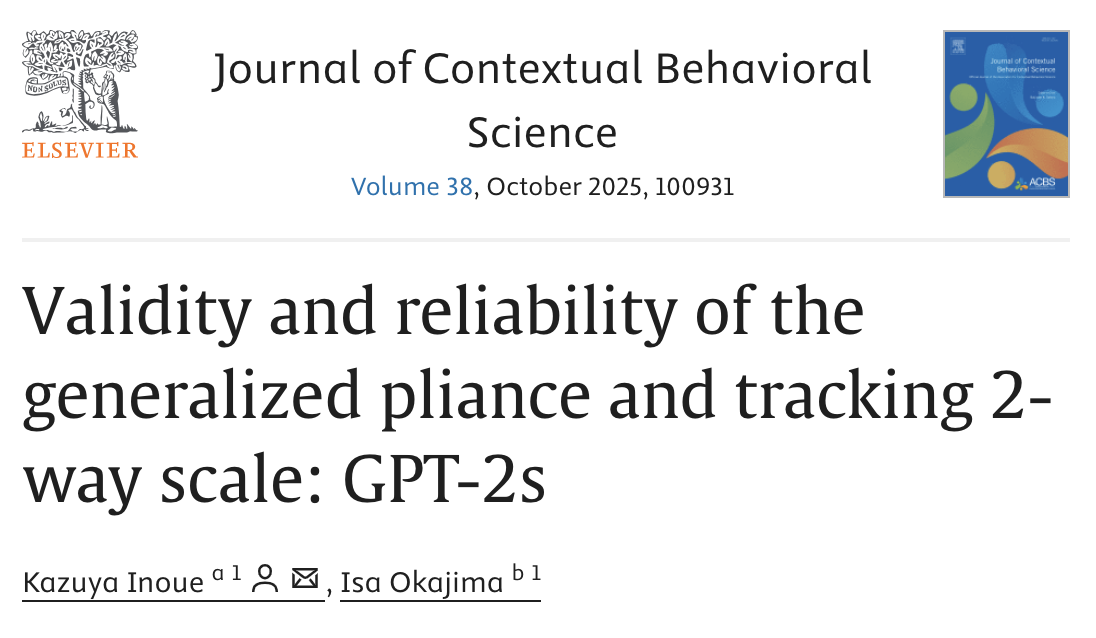Journal of Contextual Behavioral Science (JCBS)
Volume 38, October 2025
Authors
Kazuya Inoue & Isa Okajima
Key Findings
- This study developed a measure of generalized pliance and tracking in daily situations (GPT-2s).
- The study examined the validity and reliability of the GPT-2s's 16 items.
- GPT-2s-Generalized pliance scores were higher in the non-healthy group.
- GPT-2s-Generalized tracking scores were higher in the healthy group.
Abstract
This study developed and examined the validity and reliability of a scale that simultaneously measures generalized pliance and tracking with more focus on actions in daily situations. The so-called Generalized Pliance and Tracking 2-way Scale: GPT-2s comprises 16 items (8 items each for generalized pliance and tracking). In Study 1, an online survey was conducted among 1500 Japanese individuals (420 men, 1054 women, 26 others [mean age = 29.47 years, SD = 10.89]). We confirmed no violation of unidimensionality in the generalized pliance and generalized tracking factors by item response theory. Internal consistency was measured with Cronbach’s α =.80 for the generalized pliance factor and .84 for the tracking factor. Test–retest reliability was also assessed with intraclass correlation (1,1) = .61, 95 % CI [.55, .67] for generalized pliance and intraclass correlation (1,1) = .56, 95 % CI [.49, .62] for tracking. Regarding convergent validity, the generalized pliance score had a moderately negative correlation with the autonomy factor on the psychological well-being scale (r = −.42). Conversely, the generalized tracking score had moderately positive correlations with the clarification of value and commitment (r = .43) and the overall psychological well-being scale score (r = .48). Furthermore, generalized tracking scores were higher in the healthy group. In Study 2, generalized pliance score showed positive correlation with the Generalized Pliance Questionnaire (r = .43) and generalized tracking score showed positive correlation with the Generalized Tracking Questionnaire (r = .54). Finally, we discussed the usefulness and limitations of the GPT-2s.
